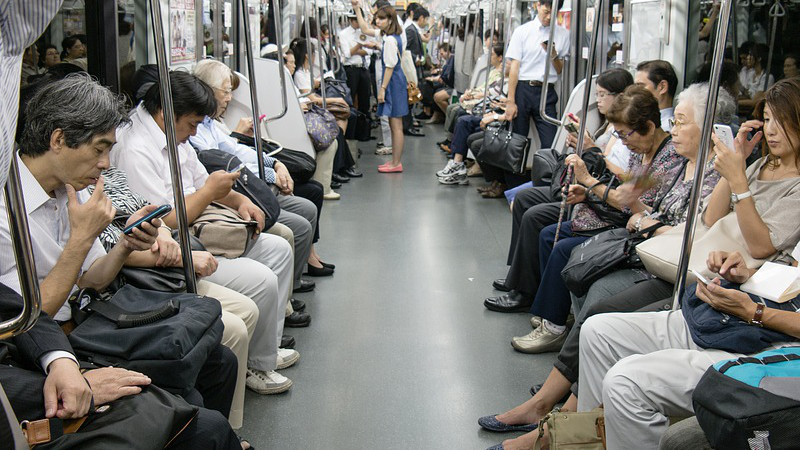The Rise And Fall Of The Ideal Worker Model In Japan – Analysis

By Hiroshi Ono
There is a significant shift occurring in the Japanese labour market. The model of work that supported Japan’s economic rise in the postwar period is meeting its demise. In that era, the ideal worker for Japanese companies was hired straight out of university, worked long hours, socialised extensively after work and committed oneself to a lifetime with the same employer. Today, the assumptions behind the ideal worker are outdated, and the model itself is no longer sustainable.
Under this postwar ideal, a worker ought to speak and write perfect Japanese, while having almost no responsibilities at home. This model and its underlying assumptions led to the complete specialisation between the sexes, with men working at the office, and women taking care of the home.
Japanese human resource management is best understood as a system ofcomplementary and self-reinforcing institutions, such as lifetime employment and seniority-based wages. These essential features of Japanese human resource management became institutionalised during the postwar high-growth period. Companies provided generous salaries and benefits so that households could do well with a single earner. They also provided employment security so that salarymen could count on long-term employment. Bound by this implicit contract, the salarymen provided their utmost loyalty and hard work.
But the decline of this postwar model has led to the weakening of worker–employer relationships in Japan, largely on account of major shifts in the supply of labour.
Japan’spopulation is shrinkingand along with it, its labour force. There is a dire labour shortage, with no end in sight. Companies can no longer afford to choose only from among the supply of Japanese males.
More women are working, and the traditional housewife is becoming a relic of the past. In most households,both spouses workat least part-time. With the assumption of a stay-at-home homemaker no longer viable, pressure is mounting on men to contribute more to household work.
Workers’ tastes and preferences are also changing. The dependence between worker and employer is weakening. A 2024 survey found that only21 percent of young peoplewant to work for the same company until retirement, compared to 35 per cent in 2014. Workers want more flexibility in time and place, especiallyafter COVID-19.
There are more foreigners inJapan’s workforcethan ever before, who bring with them different work norms, values and expectations that may not be compatible with the profile of the old ideal.
Technological change is also accelerating. In the typical Japanese company, new graduates enter the organisation at the bottom, and are trained and promoted internally. But technological change moves fast, and training people internally has its limits. To secure the best talent, companies must recruit externally to remain competitive. The frequent entry and exit of people are disrupting long-held assumptions of loyalty and of shared affiliation and identity.
In spite of these ongoing changes, some companies still cling to the ideal worker model. Organisational inertia can be overpowering, and social norms do not change overnight. Japanese companies and Japanese culture in general arenot known for their flexibility. The default response has been more about assimilation — expecting people to conform — and less about inclusion, which is about embracing differences. Instead of employers adapting to a diversifying labour force, many still expect workers to adapt to them.
More women are pursuing professional careers, but they are expected to work ‘just like men’ to succeed, especially with respect towork hours. Remote work was commonduring the COVID-19 pandemicbut is increasingly less so now becausemany employers still believethat work must take place at the office.
Language skill requirements impede the employment of foreign workers. A 2022government surveyfound that the level of Japanese required by companies is too difficult for many international students who wish to work in Japan. A2021 surveyfound that 75 per cent of Japanese companies demanded that non-Japanese job seekers meet or exceed the highest level on the country’s standardised language proficiency test. In reality, only 37 per cent of job seekers can satisfy this requirement, which means companies are missing out on many talented workers.
Firms that continue to hold out for the ideal worker will not be competitive. As Japan’s labour force globalises and diversifies, perpetuating outdated norms does not increase the country’s attractiveness to the rest of the world. Japan is one of thetop destinations for tourism, but inIMD’s world talent ranking, which evaluates the ability of countries to develop, attract and retain talent, it ranked 43 out of 64 countries.
When tastes and lifestyles change, it is unrealistic to assume that workers uniformly prioritise work over family. When the labour force shrinks, companies must make the shift from selecting people to being selected by them.
- About the author: Hiroshi Ono is Professor of Human Resource Management at Hitotsubashi University Business School.
- Source: This article was published at East Asia Forum
